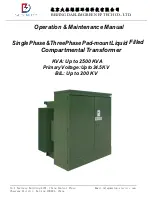
7
1. Receive Signal Path
The
HX600S
includes two receiver front ends, each opti-
mized for a particular frequency range and mode combi-
nation.
Duplexer
Signals between 0.5 and 1.8 MHz received at the antenna
terminal pass through a first low-pass filter composed of
L1039, L1040, C1300, and C1301.
Received VHF bands signals, after passing through a low-
pass filter to the T/R switch circuit composed of diode
switch
D1048
(
RLS135
),
D1049
(
1SV307
).
VHF Bands Reception
Received VHF bands signals pass through the Duplexer
circuit, low-pass filter/high-pass filter circuit, T/R switch
circuit, and protector diode
D1050
(
1SS302
) before addi-
tional filtering by a high-pass filter prior to application to
RF amplifier
Q1065
(
2SC5555
). The amplified RF signal
is passed through the band-pass filter to first mixer
Q1042
(
3SK318
). Meanwhile, VHF output from the VCO is ap-
plied through diode Band switch
D1025
(
1SS400
) and T/
R switch
D1026
(
DAN222
) to mixer
Q1042
as the first lo-
cal signal.
The TUNE-voltage from the D/A converter
Q1014
(
M62364PF
) is amplified by DC amplifier
Q1037
(
2SA1774-R
) and
Q1039
(
UMW1
), and applied to varac-
tors
D1033
,
D1035
,
D1038
, and
D1039
(
HVC369B
),
D1028
,
D1029
,
D1036
,
D1037
,
D1040
, and
D1041
(
1SV325
) in the
variable frequency band-pass filters. By changing the elec-
trostatic capacitance of the varactors, optimum filter char-
acteristics are provided for each specific operating fre-
quency.
0.5 - 1.8 MHz Reception
Received MW signals pass through the Duplexer circuit,
low-pass filter circuit, protector diode
D1057
(
1SS302
)
before additional filtering by a band-pass filter prior to
application to RF amplifier
Q1079
(
2SC4915-0
). The am-
plified RF signal is pass through the band-pass filter to
first mixer
Q1074
(
2SC4617-R
).
Meanwhile, MW output from the VCO is applied through
diode Band switch
D1024
(
1SS400
) to mixer
Q1074
as
the first local signal.
The TUNE-voltage from the D/A converter
Q1034
is am-
plified by DC amplifier
Q1037
,
Q1039
and applied to var-
actor
D1055
(
KV1520
) in the variable frequency band-pass
filters. By changing the electrostatic capacitance of the
varactor, optimum filter characteristics are provided for
each specific operating frequency.
First Intermediate Frequency (Narrow FM / AM)
The 47.25 MHz first intermediate frequency from first
mixers for AM and FM-narrow signals is passed through
NAR/WIDE switch
D1056
(
DAP222
) and 47.25 MHz
monolithic crystal filter (MCF) XF1001 to narrow IF am-
plifier
Q1072
(
2SC4915-0
) for input to pin 16 of Narrow
IF IC
Q1063
(
TA31136FN
) after amplitude limiting by
D1045
(
DA221
).
Meanwhile, a portion of the output of 11.7 MHz crystal
X1001 is multiplied fourfold by
Q1070
(
2SC4617-R
) and
Q1077
(
2SC4915-0
) to provide the 46.8 MHz second lo-
cal signal, applied to the Narrow IF IC. Within the IC, this
signal is mixed with the 47.25 MHz first intermediate fre-
quency signal to produce the 450 kHz second intermedi-
ate frequency.
This second IF is filtered by ceramic filter
CF1001
(
LTWC450F
) and amplified by the limiting amplifier with-
in the Narrow IF IC before quadrate detection by ceramic
discriminator
CD1001
(
JTBC450C7
).
Demodulated audio is output from pin 9 of the Narrow
IF IC through narrow mute analog switch
Q1047
(
2SJ364
)
before de-emphasis at
Q1053
(
DTC144EE
).
The demodulated audio signal from the
Q1063
passes
through a band-pass filter and squelch gate
Q1029
(
NJM12902V
).
The resulting audio is amplified by AF amplifier
Q1009
(
TDA2822D
) and output through
MIC/EAR
jack J1001 to
internal speaker or an external earphone.
First Intermediate Frequency (Wide FM)
The 45.8 MHz first intermediate frequency from first mix-
ers for Wide FM signals is passed through NAR/WIDE
switch
D1056
and IF amplifier
Q1080
(
2SC4915-0
) and
second mixer
Q1073
(
2SC4915-0
).
The 10.7 MHz intermediate frequency product of the mix-
er is delivered to the 10.7 MHz ceramic filter CF1002
passed through NAR/WIDE switch
D1046
for input to pin
16 of IF IC
Q1063
after amplitude.
Meanwhile, a portion of the output of 11.7 MHz crystal
X1001 is multiplied threefold by
Q1082
(
2SC4915-0
) to
provide the 35.1 MHz second local signal, applied to the
second mixer
Q1073
. Within the second mixer, this signal
is mixed with the 45.8 MHz first intermediate frequency
signal to produce the 10.7 MHz second intermediate fre-
quency.
Meanwhile, a portion of the output of 11.7 MHz crystal
X1001 is amplitude by
Q1070
and
Q1077
to provide the
11.7 MHz third local signal, applied to the IF IC. Within
the IC, this signal is mixed with the 10.7 MHz second in-
termediate frequency signal to produce the 450 kHz third
intermediate frequency.
Circuit Description
Summary of Contents for HX600S
Page 1: ...1 SERVICE MANUAL VHF FM Marine Handheld Transceiver HX600S EM019N90A ...
Page 4: ...4 Exploded View Miscellaneous Parts Note ...
Page 5: ...5 Block Diagram ...
Page 6: ...6 Block Diagram Note ...
Page 14: ...14 MAIN Unit Note ...
Page 28: ...28 Circuit Diagram FVP 31 Option NJM2904V Q5002 CMX264 Q5001 Side A SideB Parts Layout ...








































